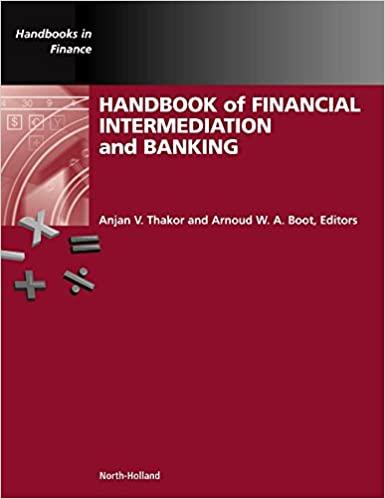Question
Consider the following data for stocks A and B: 16. The expected return and beta of a portfolio constructed by investing 1/3 of your funds
Consider the following data for stocks A and B:

16. The expected return and beta of a portfolio constructed by investing 1/3 of your funds in stock A and 2/3 in stock B is:
a. RP = 16%; bP = 1.1
b. RP = 14%; bP = 0.9
c. RP = 12%; bP = 0.8
d. Not enough information to calculate
e. None of the above.
17. The variance of a portfolio constructed by investing 1/3 of your funds in stock A and 2/3 in stock B is:
a. s2P =9.4%
b. s2P =11.7%
c. s2P =14.8%
d. Not enough information to calculate
e. None of the above.
18. If the riskless rate of return were 5%, what percentage of money invested in risky stocks should an investor place in each stock (assuming A and B are the only risky assets available)?
a. XA = 30%; XB = 70%
b. XA = 45%; XB = 55%
c. XA = 70%; XB = 30%
d. Not enough information to calculate
e. None of the above.
19. If the security market line describes equilibrium, and stocks A and B are in equilibrium, what is the return on the market portfolio and the riskless rate of interest?
a. RP = 11.25%; RF = 3.25%
b. RP = 14.5%; RF = 3.25%
c. RP = 17.7%; RF = 2.50%
d. Not enough information to determine
e. None of the above.
20. If an investor can lend and borrow at the riskless rate determined in part c, but is restricted to holding only one of the two risky stocks in this problem, which stock should be held?
a. Stock A
b. Stock B
c. Not enough information to determine
PLEASE EXPLAIN
Step by Step Solution
There are 3 Steps involved in it
Step: 1

Get Instant Access to Expert-Tailored Solutions
See step-by-step solutions with expert insights and AI powered tools for academic success
Step: 2

Step: 3

Ace Your Homework with AI
Get the answers you need in no time with our AI-driven, step-by-step assistance
Get Started


